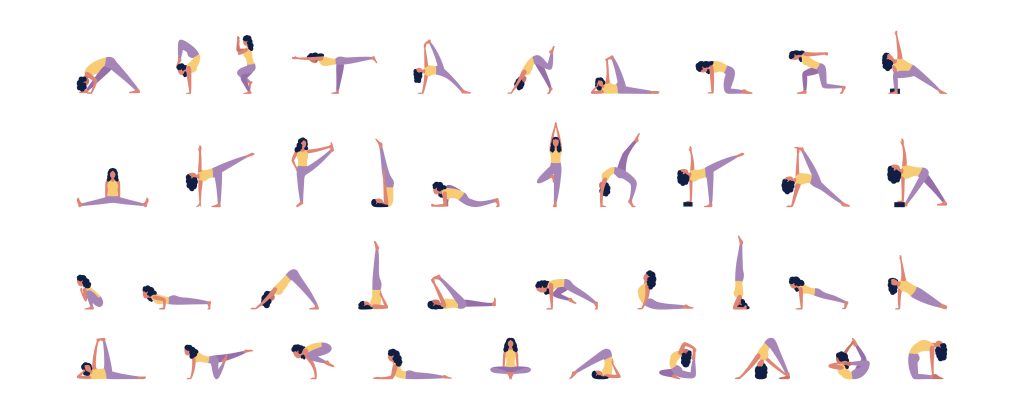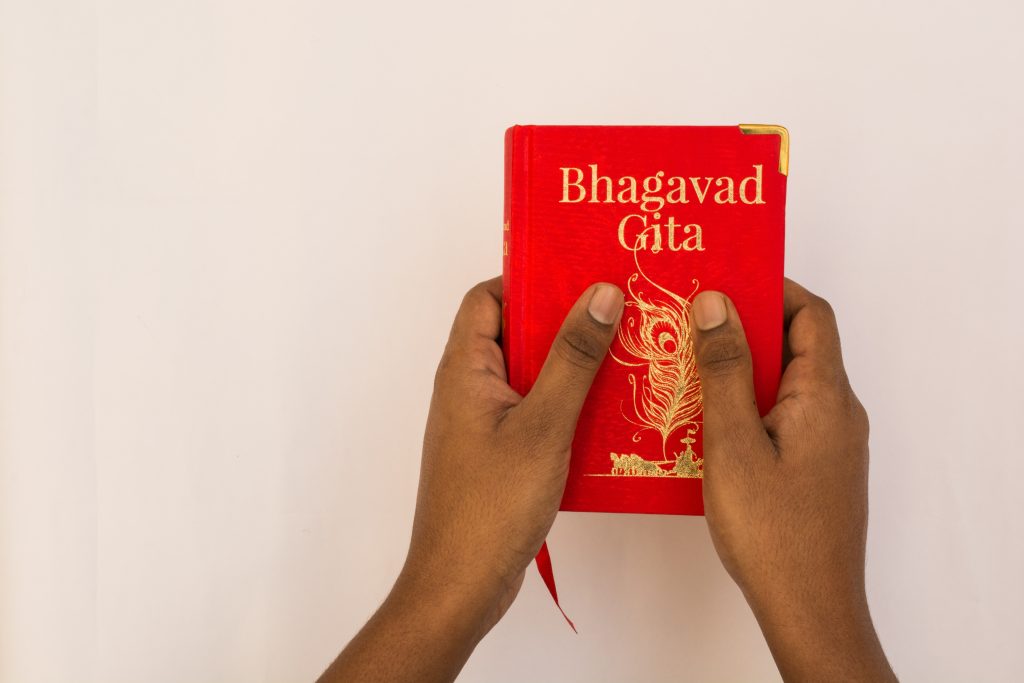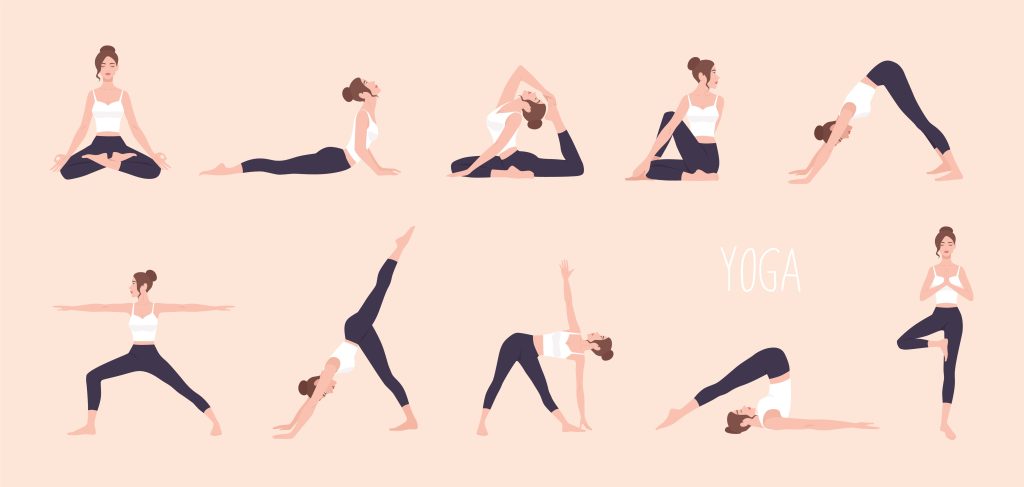
Asanas – Postures of Yoga
If you’ve already heard about asanas and the wonderful benefits of practicing yoga, then it’s time you got started. After all, what better time than now? The more you practice, the more benefits you’ll experience. It would be a shame to not reap in these advantages before moving on to other activities that are more enjoyable.
So if you feel like giving yoga a try but don’t quite know where to start or what type of yoga would suit your needs best, here’s some good news: There are many different types of yoga out there and they can all be practiced by beginners. But remember, every person is a little bit different and may respond differently to different poses so it will take some trial and error before finding one that works for you. That being said; let’s get into the nitty-gritties of this article and give an overview of the most common asanas (yoga poses) for beginner yogis.
18 Yogas as described in Bhagavad Gita
Bhagavad Gita describes different 18 types of yoga described here
What is an asana?
An asana is basically a yoga pose. There are many different asanas that can help you achieve different benefits, like stress relief, improved balance and flexibility, improved breathing and concentration, better posture and more. The most common asanas that beginners usually encounter are the following:
- Standing poses – These are poses that are held while you bend at your elbows or knees. Examples of standing poses are the plank, side plank, and eagle pose.
- Awkward balancing poses – These are poses where you balance on your hands, toes, or knees. Examples of awkward balancing poses are the cobra pose and the tree pose.
- Sitting poses – These are poses where you sit on the floor with your legs outstretched. Examples of sitting poses are cat-dog pose and child’s pose.
Benefits of practicing Asanas
Practicing yoga will get you into better shape, give you more energy, help you sleep better, lower your stress levels and more. These are just a few of the benefits you can experience from practicing yoga. Practicing yoga poses is like using your body as the canvas. When you stretch your muscles, your body becomes stronger and more flexible. This can help you recover from injuries and build your muscles.
Yoga can also help you get better sleep. When you’re practicing yoga poses before bed, you’re forcing your body to relax. This can help you get better sleep and feel rested when you wake up the next morning.
Powerful Asanas for Beginners
These poses are probably a lot easier than you’d expect and are perfect as a beginner yoga pose. So if you’re looking for something to get you started, these poses are a great place to start.
- Easy standing poses – The first pose is the standing forward fold. This pose is a great one to get beginners into form as it requires a lot of balance and flexibility because you are folded in half. You can add resistance by holding a weight in your hand or doing an inversion (e.g. the table pose).
- Standing poses with a twist – The second pose is the standing forward bend. This pose is great for beginners as it can help you build strength in your legs and spine.
1) Sirsasana The Headstand
Headstands improve the flow of venous blood back to the heart, improving heart function. They also benefit the upper back and shoulder muscles, as well as the pituitary gland. However, headstands are not recommended for people with neck injuries, high blood pressure, or during menstruation.
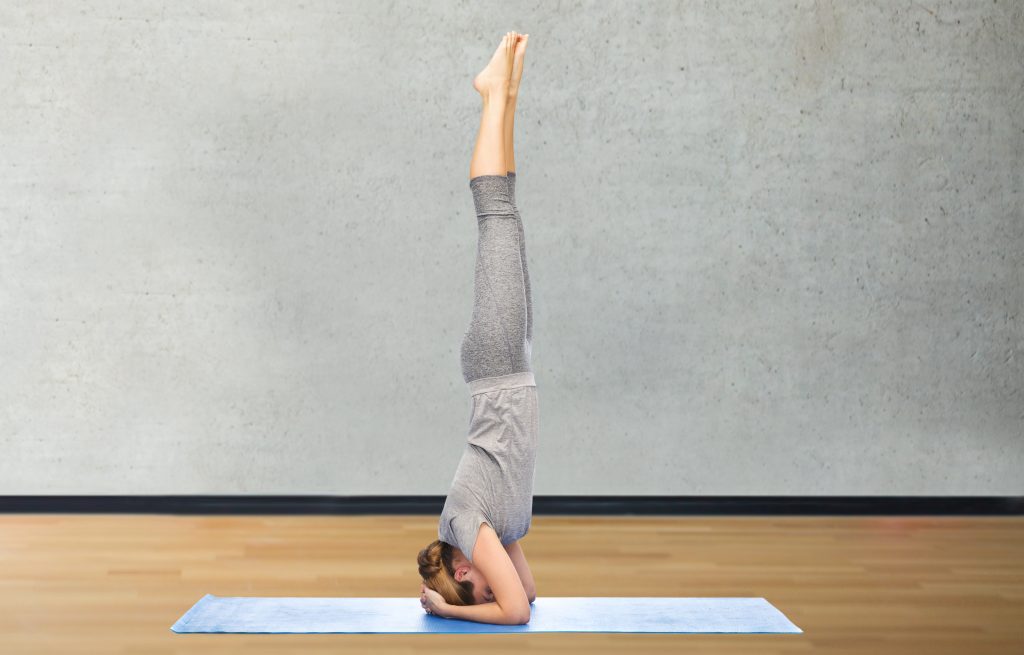
2) Sarvangasana – The Shoulder Stand
It is beneficial for stretching the neck and upper back and strengthening the lower back. It relieves stress-related tension from the neck and shoulders. It also stimulates the thyroid and parathyroid glands. People with neck injuries, chronic high blood pressure, and menstruating women should not attempt it.
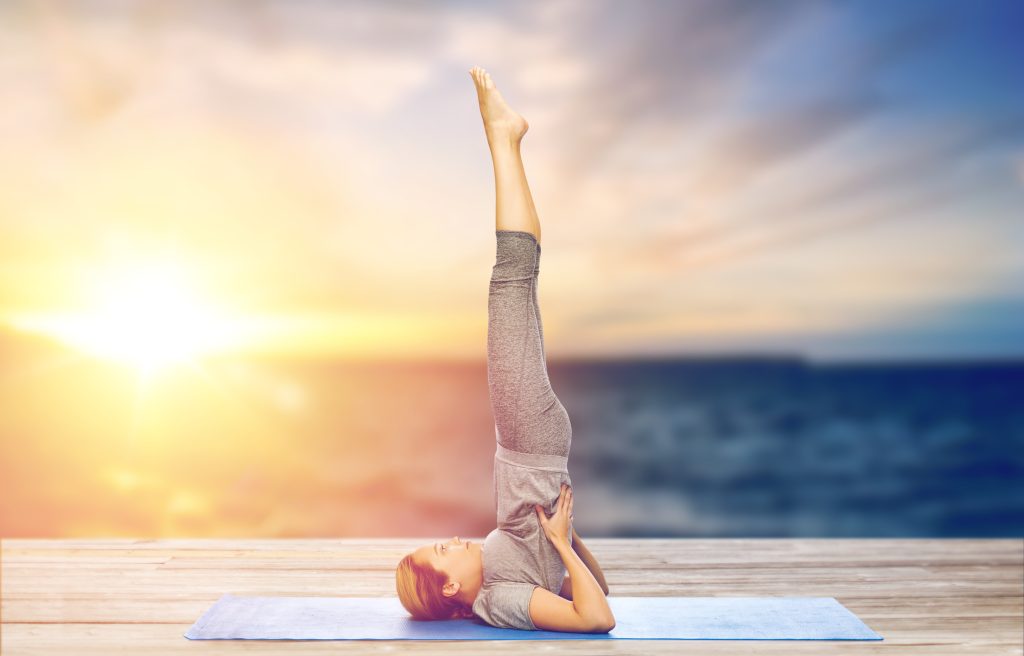
3) Halasana – The Plough
The Plough posture corrects posture, massages abdominal organs, relieves tension in the neck and back, stretches ligaments and muscles in the calves and thighs, and relaxes the nerves. It is suitable for men and women of all ages. It is not suitable for menstruating women.
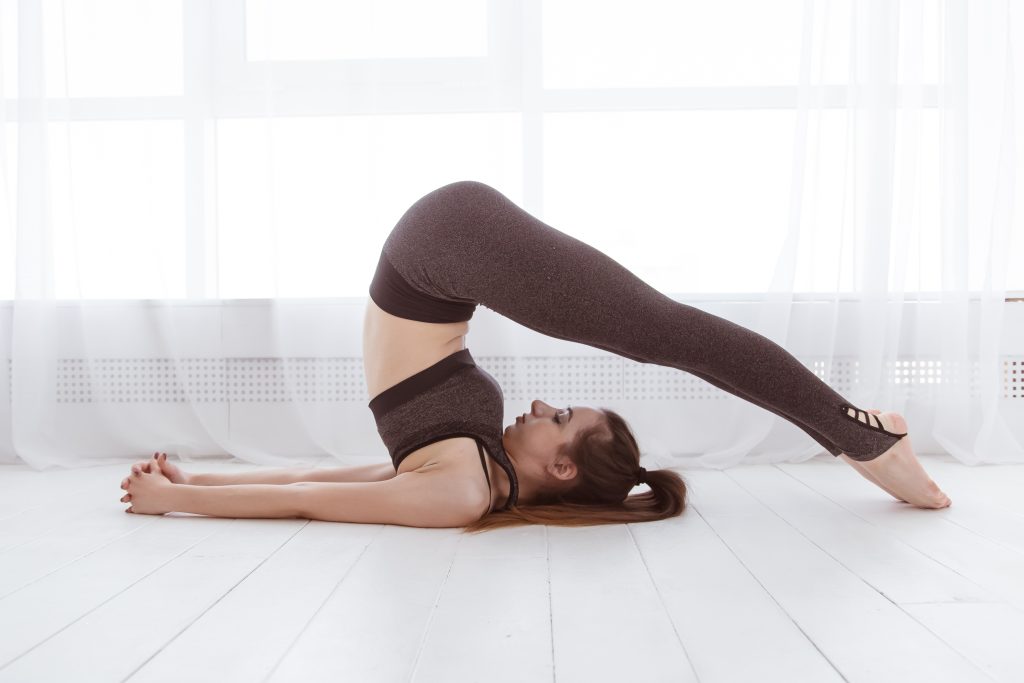
4) Matsyasana – The Fish
The Fish is designed to strengthen the spine, straighten the spine curvature, stretch the thoracic muscles, improve immunity by gently pressing the thymus gland, relieve chronic bronchitis by bending the entire back. The back is relieved of constipation and menstrual cramps.
A person should not attempt it if they have a serious lower back or neck injury.

5) Paschimottanasana – The Forward Bend
This pose stretches the body from the toes to the upper back, straightens the posture, and reduces diabetes. The pancreas is stimulated by doing this pose, which improves the blood flow.
Individuals with serious neck or back injury should not attempt it.
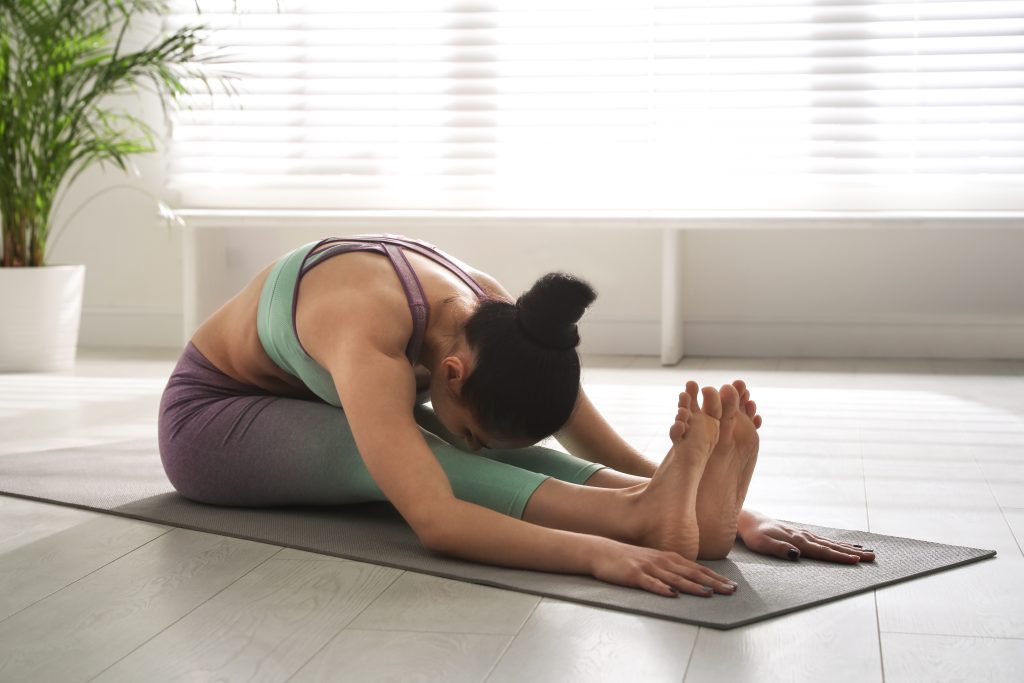
6) Salabhasana- The Locust
Salabhasana improves flexibility and strengthens the lower back, especially the . It also boosts blood circulation, massages the gastrointestinal tract, and improves digestion.
Individuals with serious neck or back injury should not attempt it.

7) Dhanurasan- The Bow
Dhanurasan- The Bow Benefits: Stretches the thoracic muscles, strengthens the legs; prevents diabetes, improves blood circulation.
It is not suitable for people with high or low blood pressure as well as pregnant women.

8) Ardha Matsyendrasana – The Half Spinal Twist
Half- spinal twist combats curvature of the spine, strengthens the hip joint and back muscles, relieves constipation, reduces pressure on spinal nerves to boost the peripheral nervous system and increase lung capacity, and improves flexibility.
Individuals with serious neck or back injury should not attempt it.

The Importance of Breath in Yoga

Like in any other activity, if you don’t focus on breathing while practicing yoga, you won’t reap in the full benefits of the asanas. You don’t have to be hyperventilating or gyrating your body when you breathe; what you are supposed to do is to inhale and exhale your breath steadily. You can also focus on the feeling of your belly rising as you inhale and falling as you exhale. This will help you with concentration and focus.
Breathing can help you achieve a better state of calmness and focus. It can also make you more relaxed. When you’re feeling more relaxed, you can perform your poses more easily and make fewer mistakes.
Conclusion
Yoga is a mind-body activity that can provide relaxation, increased flexibility and strength, and help with concentration and focus. Beginners can benefit from practicing basic poses like the standing forward fold and the standing forward bend while breathing steadily. It is important that beginners keep in mind the importance of breath while practicing yoga.
Asanas can help you relieve stress and increase your energy. Yoga poses can also help you develop better breathing techniques and align your body more properly. The most important thing for beginners to remember is that yoga is for your own personal growth. If you’re practicing yoga just for the sake of being more flexible or toned, then you’ll likely be disappointed in the results. Instead, Yoga should be used as a tool to help improve your mental and physical well-being.
